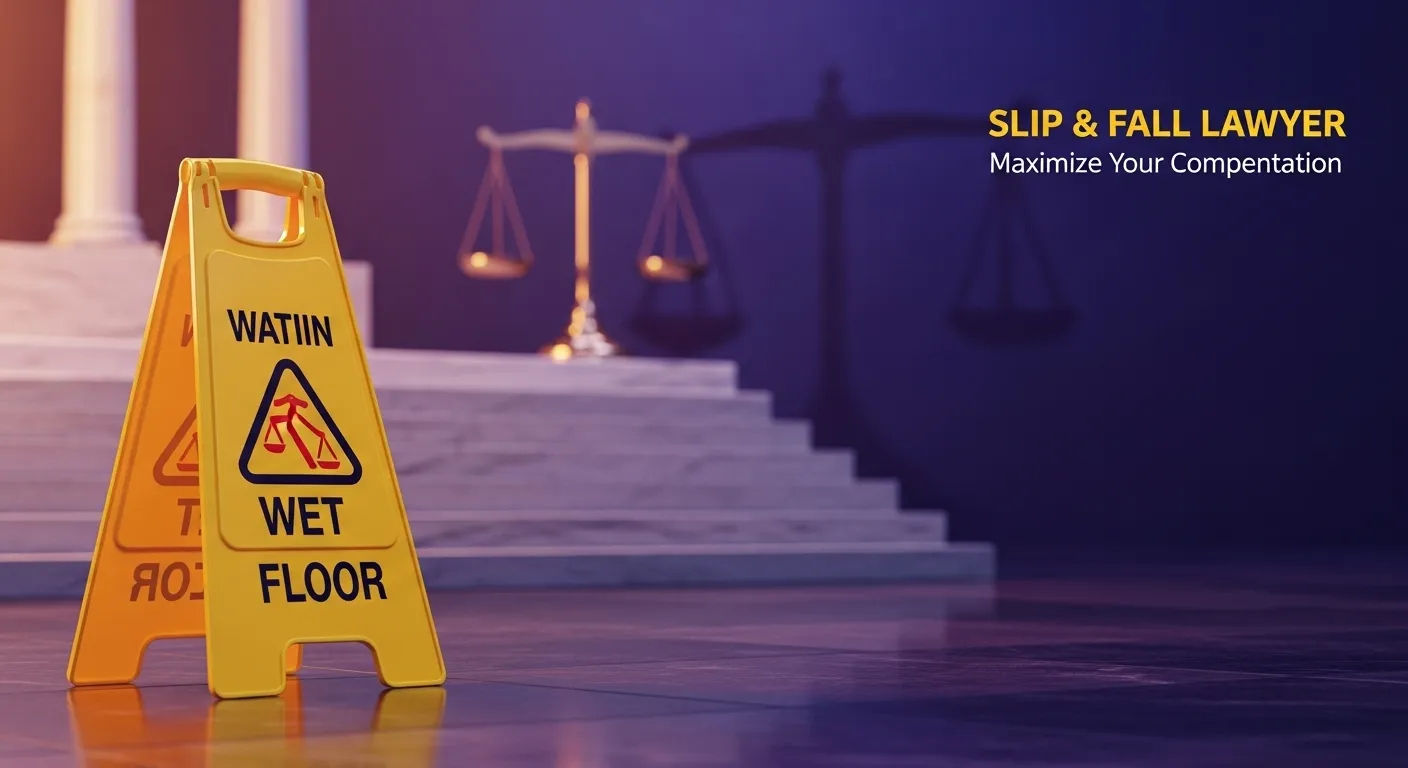A slip and fall lawyer is a personal injury attorney who specializes in premises liability cases, helping victims recover compensation when injured due to property owner negligence. Top slip and fall lawyers have secured over $50 million in total recoveries for their clients, with individual cases reaching record-breaking amounts like the historic $58.3 million verdict achieved by PARRIS Law Firm.
When you’ve been injured in a slip and fall accident, choosing the right legal representation can mean the difference between a minimal settlement and life-changing compensation. The most successful slip and fall attorneys have proven track records of securing million-dollar verdicts and settlements, understanding exactly how to build cases that maximize recovery for their clients.
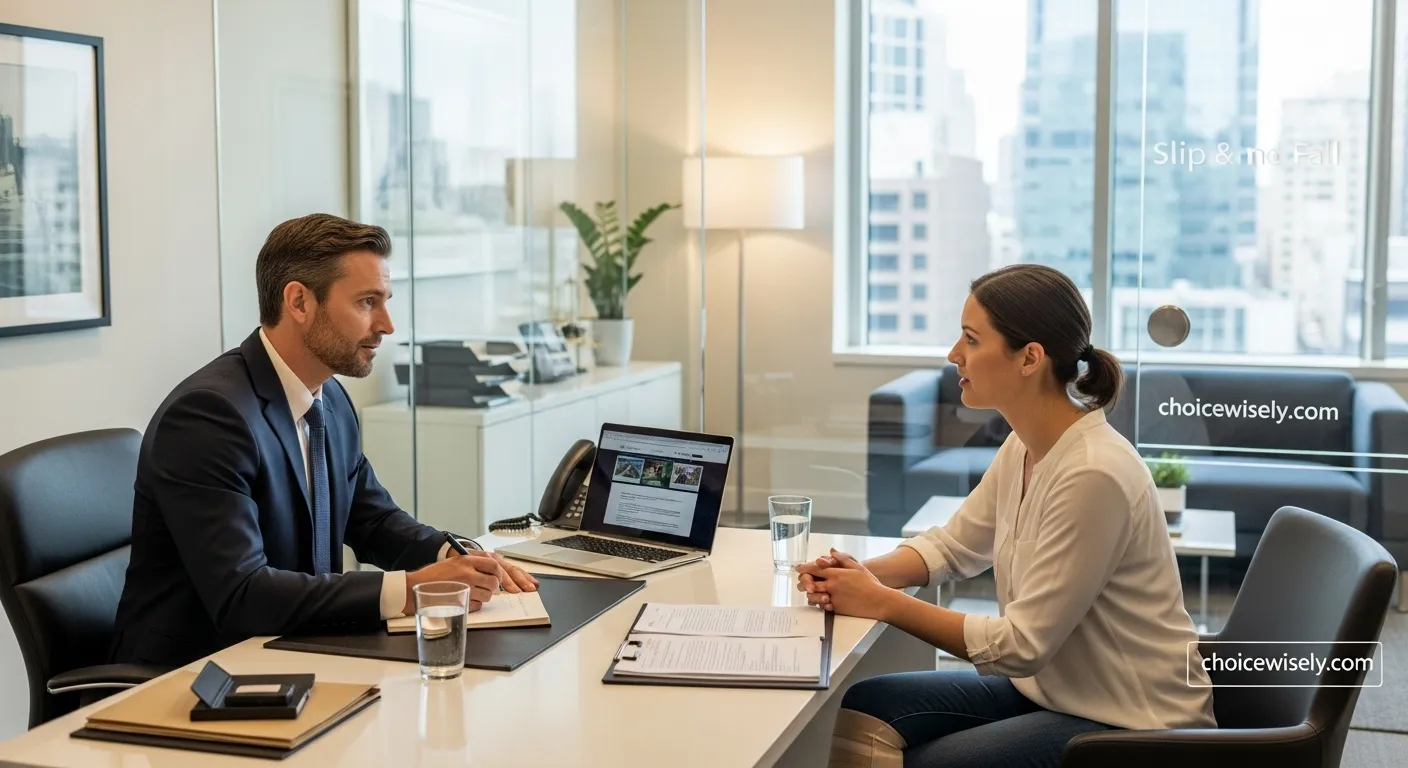
What Is a Slip and Fall Lawyer?
A slip and fall lawyer is a specialized personal injury attorney who focuses exclusively on premises liability cases. The National Safety Council reports that slip and fall accidents result in over 8 million emergency room visits annually, making them one of the leading causes of personal injury in the United States.
Unlike general practice attorneys, slip and fall lawyers possess deep expertise in the specific laws governing property owner responsibilities and the complex legal standards required to prove negligence in premises liability cases. They understand the nuances of different property classifications, visitor status determinations, and the evidence needed to establish liability.
When you need a slip and fall lawyer:
- You’ve suffered serious injuries requiring medical treatment
- The property owner’s negligence contributed to your accident
- Insurance companies are offering inadequate settlements
- You’re facing mounting medical bills and lost wages
- The accident occurred within the statute of limitations period
For more information about premises liability and related legal standards, consult resources from the Department of Justice or your state’s legal aid society. Understanding your legal rights and the documentation required for premises liability cases is crucial. For comprehensive information about legal procedures and documentation, explore our legal document templates to better understand the legal process.
Record-Breaking Settlement Amounts: What $50M+ Recoveries Look Like
The landscape of slip and fall settlements has been transformed by attorneys who consistently secure eight-figure recoveries for their clients. Understanding these record-breaking cases provides insight into what’s possible when working with top-tier legal representation.
Historic $58.3 Million PARRIS Verdict
PARRIS attorneys achieved the largest slip and fall verdict in U.S. history, securing $58,358,431 for a Palmdale railyard worker who suffered severe injuries after falling on top of a train car while performing electrical repairs. This groundbreaking case demonstrates how the right legal team can achieve unprecedented results when armed with compelling evidence and expert trial skills.
Million-Dollar Case Examples That Set Precedents
The legal landscape is filled with remarkable settlement achievements that showcase what’s possible:
A Las Vegas jury awarded over $16.4 million to a woman who slipped on a wet concrete floor at Lowe’s, suffering a traumatic brain injury that permanently affected her sense of taste and smell. This case highlighted how seemingly minor accidents can result in life-altering injuries deserving substantial compensation.
An $18 million settlement was reached for a University of Pennsylvania medical student who fell into an uncovered manhole, sustaining a broken back and spinal injuries. This case emphasized the importance of proper property maintenance and adequate safety measures.
A $15 million settlement was awarded to a truck driver who slipped on a grease spill in a Colorado Walmart, though state law limited certain damages. Even with legal limitations, skilled attorneys secured substantial compensation for their client.
Additional significant recoveries include:
- $13 million settlement for a Nevada Lowe’s slip and fall case involving skull fracture
- $12.2 million awarded for a Virginia convenience store ice-related fall
- $11.1 million federal jury award for a ladder collapse incident
- $10 million settlement for a Philadelphia construction site ice fall
These cases demonstrate that when property owners fail in their duty of care, the financial consequences can be substantial. The key factors driving these high settlements include severity of injuries, clear negligence, long-term medical needs, and expert legal representation.
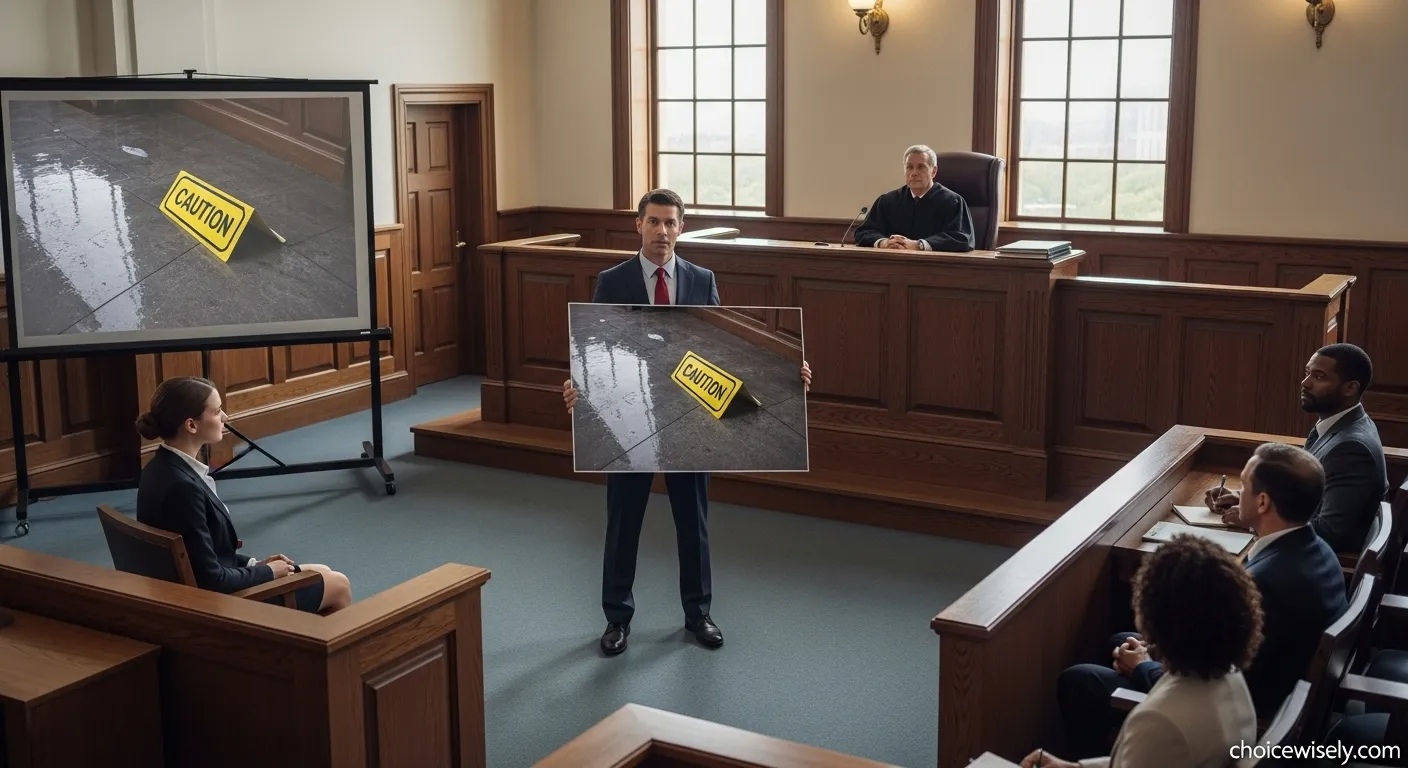
How to Choose a Slip and Fall Lawyer with Proven Results
Selecting the right attorney is crucial for maximizing your recovery potential. The difference between an average lawyer and a specialist with a proven track record can literally be worth millions of dollars in compensation.
Track Record Evaluation Criteria
When evaluating potential attorneys, focus on specific metrics that indicate genuine expertise:
Settlement and verdict amounts: Look for lawyers who have secured multiple million-dollar recoveries, not just one or two lucky cases. Experienced attorneys who specialize exclusively in these types of cases often get up to four times more compensation than those who merely dabble in this area of law.
Case volume and specialization: The most successful slip and fall lawyers handle hundreds of these cases annually, developing pattern recognition and negotiation advantages that benefit their clients.
Trial experience: While most cases settle, attorneys willing and able to take cases to trial often secure better settlements because insurance companies know they mean business.
Professional recognition: Look for attorneys recognized by peer organizations, bar associations, and legal directories for their expertise in premises liability law.
Critical Questions to Ask Potential Attorneys
Before hiring legal representation, ensure you ask these essential questions:
“How many slip and fall cases have you handled in the past year?” Specialists should handle dozens or hundreds of these cases annually.
“What percentage of your cases settle versus go to trial?” Most personal injury cases settle before reaching the courtroom, but the willingness and ability to take a case to trial if necessary demonstrates the lawyer’s commitment to securing the best possible outcome.
“Can you provide specific examples of recent settlements or verdicts?” Legitimate specialists will have multiple recent successes they can discuss.
“What is your contingency fee percentage?” Most slip and fall lawyers work on contingency, typically charging 33-40% of any recovery.
“How do you calculate the value of my case?” Experienced attorneys should provide detailed explanations of how they assess both economic and non-economic damages.
Red Flags to Avoid
Certain warning signs indicate you should look elsewhere for representation:
- Attorneys who practice multiple areas of law without specialization
- Lawyers who guarantee specific outcomes or settlement amounts
- Firms that pressure you to sign contracts immediately
- Attorneys who request upfront payments beyond standard costs
- Lawyers who seem unfamiliar with recent developments in premises liability law
The most successful slip and fall attorneys operate with transparency, providing clear explanations of their approach and realistic expectations based on their extensive experience.
Understanding Your Slip and Fall Case Value
Accurately valuing a slip and fall case requires understanding multiple factors that influence compensation amounts. Top attorneys with $50M+ track records know how to identify and maximize every element of damages to ensure clients receive full compensation.
Settlement Ranges by Injury Type
Most slip and fall cases settle between $15,000 to $75,000, but cases involving severe injuries, clear negligence, and substantial financial losses often lead to much higher payouts. Understanding these ranges helps set realistic expectations:
Minor injuries (bruises, minor cuts, short-term pain): $5,000 – $25,000 Moderate injuries (fractures, sprains requiring surgery): $25,000 – $100,000
Serious injuries (traumatic brain injury, spinal damage): $100,000 – $1,000,000+ Catastrophic injuries (permanent disability, life-altering conditions): $1,000,000+
Economic vs. Non-Economic Damages
Economic damages represent quantifiable financial losses:
- Medical expenses (past and future treatment costs)
- Lost wages and reduced earning capacity
- Rehabilitation and therapy costs
- Assistive devices and home modifications
- Transportation costs for medical care
Non-economic damages address intangible impacts:
- Pain and suffering
- Emotional distress and mental anguish
- Loss of enjoyment of life
- Permanent disfigurement or disability
- Impact on family relationships
Courts consider both the immediate costs of an injury and the long-term impact on a victim’s life when determining settlement amounts. Experienced attorneys know how to document and present both types of damages effectively.
Factors That Increase Compensation
Several key factors can significantly boost settlement values:
Severity of injuries: Cases involving brain injuries, spinal damage, or permanent disability tend to result in higher payouts. The more severe and long-lasting the injuries, the greater the potential compensation.
Clear negligence: When property owners knew or should have known about hazardous conditions but failed to address them, it strengthens the case significantly.
Economic impact: Higher-earning victims or those with extensive medical needs typically receive larger settlements to account for their greater financial losses.
Age and life expectancy: Younger victims with longer life expectancies may receive higher awards for future medical care and lost earning capacity.
Quality of legal representation: Experienced attorneys with proven track records often manage successful negotiations leading towards more favorable settlements for their clients.
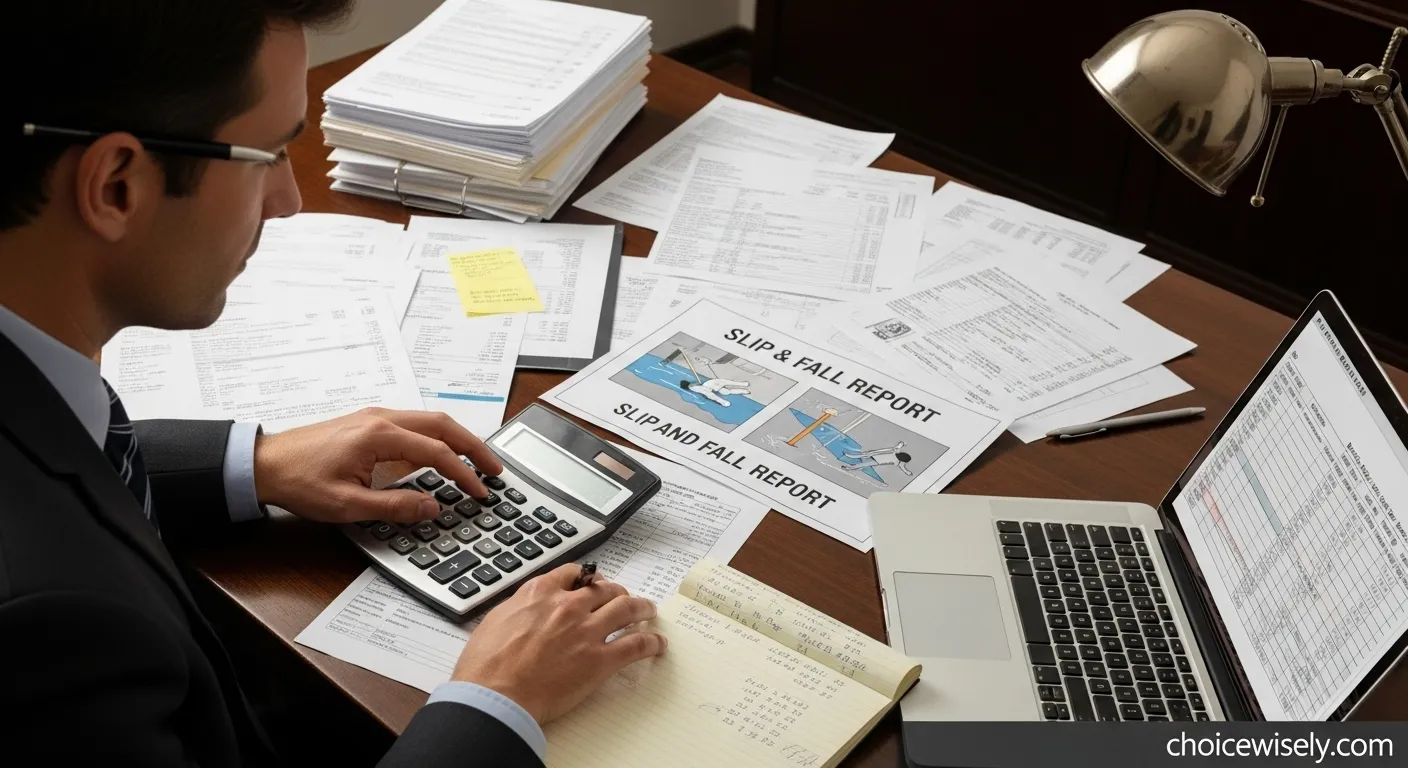
The Legal Process: How Top Lawyers Maximize Your Recovery
Understanding how successful slip and fall attorneys approach cases provides insight into why some lawyers consistently achieve better results than others. The most effective practitioners follow systematic approaches designed to build the strongest possible cases.
Initial Case Evaluation and Investigation
The first step in a slip and fall case involves investigating by gathering as much evidence as possible, including witness statements, surveillance footage, photos of the hazard, medical records, and more to establish the basis for the case.
Top attorneys immediately dispatch investigation teams to preserve critical evidence before it disappears. This includes:
- Photographing accident scenes from multiple angles
- Interviewing witnesses while memories are fresh
- Securing surveillance footage before it’s deleted
- Obtaining incident reports from property owners
- Documenting weather conditions and other factors
Evidence Collection Strategies
The most successful slip and fall lawyers know that cases are won or lost based on evidence quality. They employ comprehensive strategies including:
Scene documentation: Professional photographers capture detailed images of hazardous conditions, lighting issues, warning sign placement, and property maintenance records.
Expert witness coordination: Top attorneys work with accident reconstruction specialists, property maintenance experts, and medical professionals to strengthen their cases.
Medical documentation: Ensuring complete medical records that clearly link injuries to the accident and establish the full scope of current and future medical needs.
Property history research: Investigating whether similar accidents occurred previously, indicating the property owner’s knowledge of dangerous conditions.
Negotiation vs. Trial Decisions
Settlement negotiations continue throughout the legal process, and even after filing a lawsuit, cases might settle before reaching civil court. Experienced attorneys make strategic decisions about when to settle versus proceeding to trial.
Factors influencing this decision include:
- Strength of evidence and liability proof
- Client’s willingness to endure trial stress
- Insurance company’s settlement offers
- Potential jury sympathy and local verdict history
- Client’s immediate financial needs
The most successful attorneys prepare every case as if it’s going to trial, which often results in better settlement offers from insurance companies who recognize the lawyer’s commitment and capability.
What to Do Immediately After a Slip and Fall Accident
Taking the right steps immediately after a slip and fall accident can significantly impact your ability to recover compensation later. Many potential cases are weakened or lost entirely because victims don’t understand the importance of immediate action.
Evidence Preservation Steps
Document the scene immediately: If you’re physically able, take photographs of the hazardous condition that caused your fall, including wide-angle shots showing the overall area and close-ups of specific dangers.
Identify and speak with witnesses: Get contact information from anyone who saw your accident. Witness testimony often proves crucial in establishing how the accident occurred and the property owner’s negligence.
Report the incident: Notify the property owner, manager, or security personnel immediately. Ensure they create an incident report and request a copy for your records.
Preserve physical evidence: Keep the shoes and clothing you were wearing, as they may be examined later to determine factors that contributed to your fall.
Take photographs of your injuries: Document visible injuries immediately and continue photographing the healing process to show the progression and impact of your injuries.
Medical Documentation Requirements
Seek immediate medical attention: Even if your injuries seem minor, get evaluated by a healthcare professional. Some serious injuries, particularly head trauma, may not manifest symptoms immediately.
Follow all medical advice: Attend all appointments, complete prescribed treatments, and follow rehabilitation recommendations. Insurance companies scrutinize medical compliance when evaluating claims.
Keep detailed medical records: Maintain copies of all medical reports, bills, prescriptions, and treatment recommendations. These documents prove the extent and cost of your injuries.
Document pain and limitations: Keep a daily journal describing your pain levels, limitations, and how the injury impacts your daily activities and work performance.
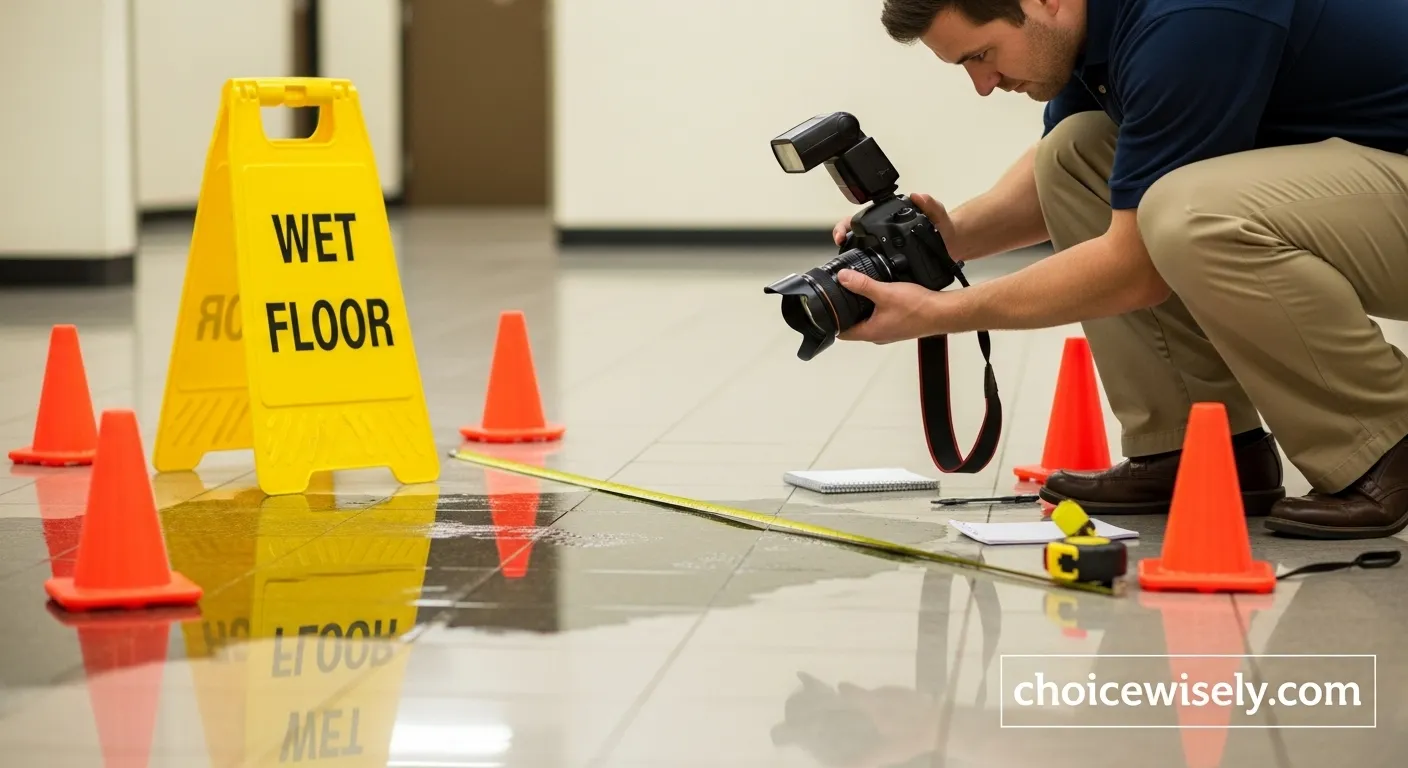
Timeline for Legal Action
Each state has a specific statute of limitations that dictates how long an injured party has to file a slip and fall lawsuit, ranging from one to six years depending on the state. However, waiting until the deadline approaches can severely damage your case.
Immediate action (within 24-48 hours):
- Seek medical attention
- Document the scene and injuries
- Report the incident
- Preserve evidence
Within one week:
- Consult with a slip and fall attorney
- Begin gathering medical records
- Notify insurance companies
Within 30 days:
- Complete initial medical evaluations
- Allow attorney to begin formal investigation
- Avoid giving recorded statements to insurance companies without legal counsel
The sooner you contact qualified legal representation, the better your chances of preserving crucial evidence and building a strong case.
Common Causes of High-Value Slip and Fall Cases
Understanding what leads to substantial slip and fall settlements helps victims recognize when they may have valid claims and property owners understand their legal responsibilities.
Premises Liability Fundamentals
Premises liability refers to liability for injuries resulting from dangerous conditions on property the defendant owns or controls. Property owners have specific duties depending on the status of the person on their property:
Business invitees (customers in stores): Property owners owe the highest duty of care, including regular inspections and prompt hazard correction.
Licensees (social guests): Property owners must warn of known hazards but aren’t required to inspect for unknown dangers.
Trespassers: Generally owed no duty of care except to avoid intentional harm.
Property Owner Duties and Negligence Standards
The American Bar Association emphasizes that in most U.S. states, property owners owe a duty of reasonable care to those who enter their property, meaning the owner must prevent or correct dangerous conditions on their property, or at least warn visitors of those conditions.
Common high-value negligence scenarios include:
Wet floor conditions without adequate warnings: Spills, freshly mopped areas, or tracked-in water that aren’t properly marked with warning signs.
Structural defects: Broken stairs, uneven flooring, damaged handrails, or deteriorating walkways that property owners knew about but failed to repair.
Inadequate lighting: Poorly lit stairwells, parking areas, or walkways that prevent visitors from seeing hazards.
Weather-related hazards: Failure to remove ice and snow, inadequate drainage causing water accumulation, or slippery surfaces during adverse weather.
Construction zone dangers: Inadequate barriers, warning signs, or safety measures around renovation or repair areas.
The highest settlements typically involve cases where property owners knew about dangerous conditions for extended periods but failed to take corrective action, especially when similar accidents occurred previously.
Contingency Fees: How Payment Works with Top Lawyers
One of the most attractive aspects of working with slip and fall attorneys is the contingency fee structure, which allows injury victims to access high-quality legal representation without upfront costs.
Fee Structure Explanation
Most personal injury attorneys work on a contingency fee basis, meaning they only get paid if they win something for you—either through settlement or trial. This arrangement aligns the attorney’s interests with the client’s, ensuring lawyers are motivated to achieve the best possible outcomes.
Typical contingency fee percentages:
- 33% for cases that settle before filing a lawsuit
- 40% for cases that require litigation or trial
- Additional costs for case expenses (court fees, expert witnesses, depositions)
No Upfront Costs
You won’t have to pay anything upfront, and their fees will come out of your settlement, so hiring an attorney doesn’t have to be a financial burden. This makes quality legal representation accessible regardless of financial circumstances.
When You Pay Attorney Fees
Payment only occurs when the attorney successfully recovers compensation through:
- Settlement negotiations with insurance companies
- Jury verdicts in favor of the client
- Arbitration awards
If the attorney doesn’t recover any compensation, clients typically owe nothing for legal fees, though they may be responsible for case costs in some agreements.
Understanding Case Costs vs. Attorney Fees
While attorney fees are contingent on success, case costs are separate expenses that may include:
- Court filing fees
- Expert witness fees
- Medical record retrieval costs
- Deposition expenses
- Investigation costs
Many top attorneys advance these costs and only recover them from successful settlements, while others may require clients to pay costs regardless of outcome. Clarify this arrangement before hiring representation.
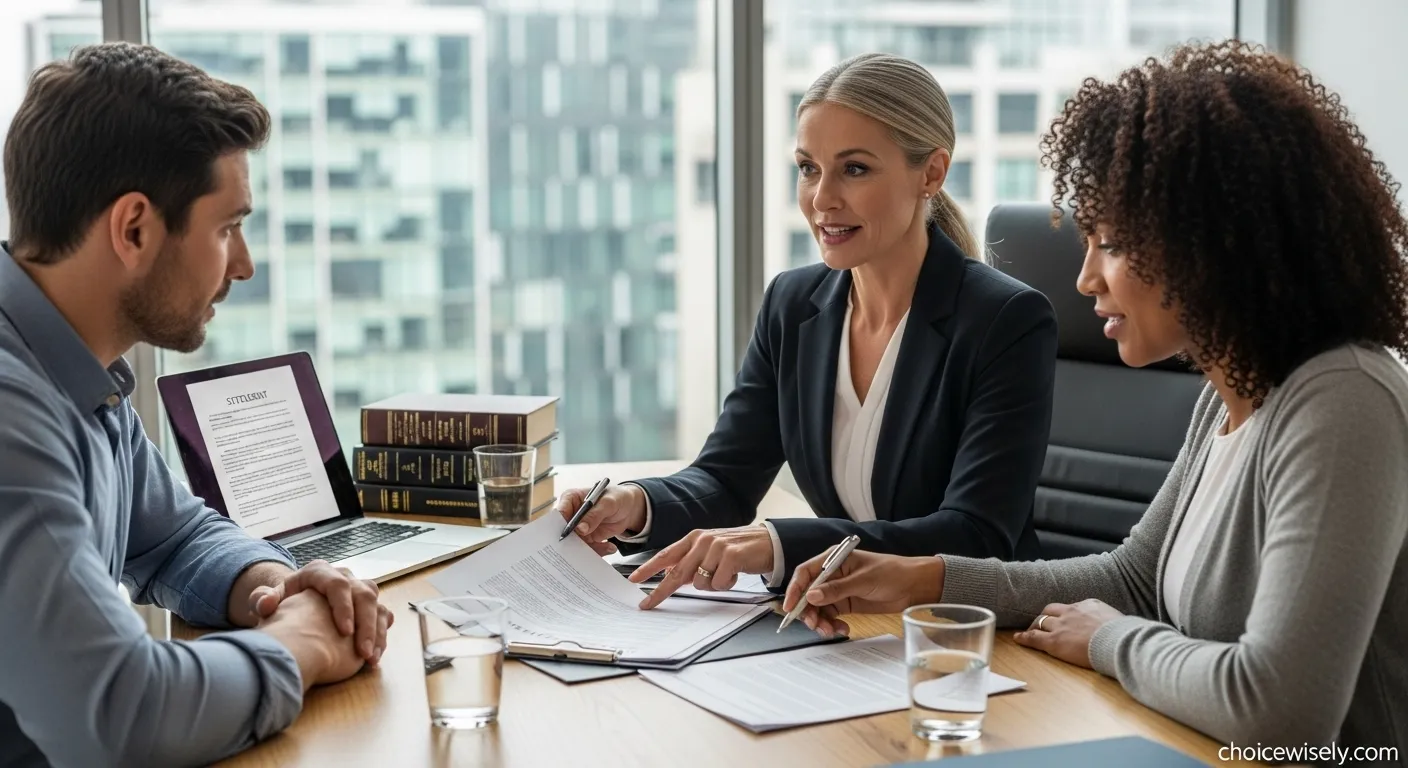
Legal proceedings can be complex, and understanding different aspects of law can be beneficial. For additional insights into legal matters and recent developments, visit our legal blog which covers various legal topics and current events.
Disclaimer
The information provided in this article is for educational purposes only and does not constitute legal advice. Every slip and fall case is unique, and outcomes depend on specific circumstances, evidence, and applicable laws. Settlement amounts mentioned are examples from actual cases but do not guarantee similar results in other situations.
If you’ve been injured in a slip and fall accident, consult with a qualified personal injury attorney licensed in your jurisdiction to discuss your specific situation and legal options. The statute of limitations for filing claims varies by state, so prompt action is essential to preserve your rights.
This content is reviewed and updated regularly to ensure accuracy, but laws and legal standards may change. For the most current information relevant to your case, seek advice from a licensed attorney. For comprehensive legal disclaimers and terms of use, visit ChoiceWisely’s disclaimer page.
Last updated: September 20, 2025 Reviewed and edited by a human expert
Taking Action After a Slip and Fall: Your Path to Maximum Recovery
When property owner negligence leads to serious injuries, you deserve compensation that fully addresses your medical expenses, lost income, and pain and suffering. The difference between minimal settlements and life-changing recoveries often comes down to choosing an experienced slip and fall lawyer with a proven track record of success.
The most successful slip and fall lawyers combine deep expertise in premises liability law with the resources and determination to take on insurance companies and property owners. They understand that each case requires thorough investigation, expert testimony, and strategic negotiation to achieve optimal results.
Remember that time is critical in slip and fall cases. Evidence disappears, witnesses’ memories fade, and statutes of limitations approach. The sooner you consult with qualified legal representation, the better your chances of preserving crucial evidence and building a strong case.
If you’ve been injured in a slip and fall accident, don’t let insurance companies pressure you into quick settlements that fail to account for your full damages. Contact experienced slip and fall attorneys who have the proven track record and resources necessary to fight for the compensation you deserve.
Your recovery—both physical and financial—depends on taking swift action and choosing the right slip and fall lawyer to protect your interests and maximize your compensation potential.
FAQ?
How much are most slip and fall settlements?
Most slip and fall settlements range between $10,000 and $50,000, though serious cases or those involving negligence may result in much higher amounts.
Are slip and fall cases hard to win?
They can be hard to win because you must prove negligence, liability, and damages, and property owners often defend themselves by disputing notice of hazard or the extent of injury.
What is the slip and fall law in Georgia?
In Georgia, slip and fall cases are governed by premises liability under OCGA § 51-3-1; plaintiffs must show property owners had duty of care, breached it, that breach caused injury, and that they suffered damages.
What is the average payout for a slip and fall?
The average payout in many slip and fall cases falls between $10,000–$50,000, with higher payouts (six- or seven-figure) possible for severe injuries, high medical costs, or egregious negligence.
